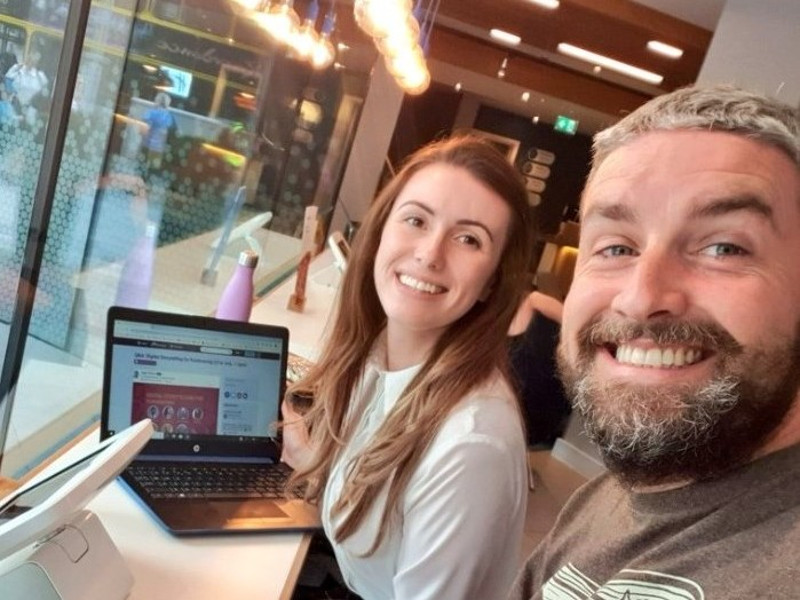Marketing expert Safann Mac Carthy from Intonate.ie on the art of gathering target market feedback without having to spend a small fortune. Her advice: assume nothing, ask the question.
If I had a tenner for every business that assumed they understood what their customers wanted because they themselves are the best example of their target market, well, I might not quite be able to retire, but you catch my drift.
You may have developed a product or a service on the back of a need that you have experienced personally, but the minute you took the brave step to become a product owner, you can no longer be relied on to be unbiased about its development. This is now the time to start asking questions of a wider audience. Gathering as much data as you can to fuel future product development is the only way to create a winning growth strategy.
The truth is that you can easily burn through €10,000 to €15,000 carrying out in-depth quantitative or qualitative studies with one of the leading research agencies. Some businesses may be at a stage where this is a viable investment option, but for the rest of us, it’s time to get creative.
The good news is that there are lots ways that you can get this feedback yourself and you only need two things to start you off – the right audience and the right questions.
Tips for doing your own market research
What is it you need to know?
Take some time to consider the burning issues you are dealing with. Are you thinking about new product developments, are you considering price changes, have sales suddenly fallen away and you’re not sure why? Do you simply what to know where you rate against the competition? Try and focus on one or two topics. The more you try and add in, then the longer the survey will be. Completion is the biggest issue for market research these days. No one has time to waste.
Who do you think your customer is?
Write down all the characteristics of who you believe your ideal customer is. What age might they be, should they be homeowners, or students, should they have kids to benefit from your product, do they need to be in a certain geographic area. The list goes on.
Where do they “Live”?
Next, think about where this ideal customer “lives”. Not just where they call home, but where do they go about their daily lives (shopping, recreation, transport) and where do they consume news and advertising. The same rules apply if you sell to another business. The only aspect that might change is where you actually make contact with them.
Quantity or quality?
If you want to know if 9 out of 10 people prefer you over your competitors or any other question that can be answered with a yes or no, then you want as high a number of participants as possible. Make sure the questions are not asked in a way that delivers the message you want over what customers actually feel. Test them out internally or with family and friends before going externally.
If your questions are looking for a more detailed in-depth response, then you would be better off with a smaller group of customers who are willing to give you a little more of their time.
The rule books will tell you that a robust research sample should be over 1,000 responses from an affected audience. The reality is that this is not always going to be possible. Geography, time, or cost can all impact the number of responses that you’re going to have. You could balance the quantity of responses against the impact of the decision you’re trying to make. If you just want a steer on something like a small price change, then you can probably manage with a lower amount than if you’re trying to decide on a capital investment cost to alter your production methods and product features.
The Approach
Nothing beats speaking to someone face-to-face. It allows you to read body language and see reactions. These reactions can sometimes uncover issues that you never knew existed. If you are a consumer-based company then you can consider the classic “exit poll” options of supermarkets, train stations, cinemas etc. Don’t forget to ask permission and ensure you identify yourself as a business just looking for feedback. Consider an incentive. Think about offering vouchers in exchange for the time people will give you. Focus groups allow for this kind of interaction too and work great if you are selling to another business. There are a huge number of locations available, either through shared office space providers or your Local Enterprise Office, along with the more costly hotel option. Bank of Ireland have 12 WorkBench locations nationwide, with event room facilities available free of charge.
Because of geographically spread-out or international markets you may need to look to social media and email options too. There are many of these and plenty won’t break the bank. The the challenge is to make sure you’re hearing from the right people and you can measure the volume of responses accurately.
Evaluating the information
This is when you have to be sensible and take the emotion out of the process. Don’t make rash decisions based on the responses of 2-3 people and don’t ignore results from 100 just because you don’t like what you hear.
Making assumptions can be Kryptonite for any business. Spending resources to develop products and services that aren’t really what the customer wants but based on your gut feeling is not always the smartest move. So, ask the question!
If you would like more advice on your market research options, contact Safann@intonate.ie or call on 0868344474.
Published: 3 December, 2019
-
Bank of Ireland is welcoming new customers every day – funding investments, working capital and expansions across multiple sectors. To learn more, click here
-
For support in challenging times, click here
-
Listen to the ThinkBusiness Podcast for business insights and inspiration. All episodes are here. You can also listen to the Podcast on:
-
Spotify
-
SoundCloud
-
Apple






